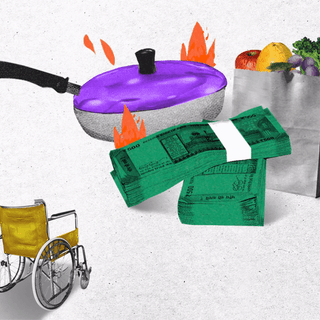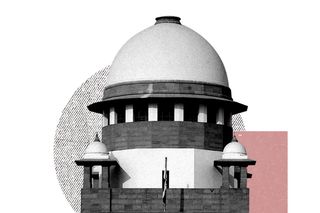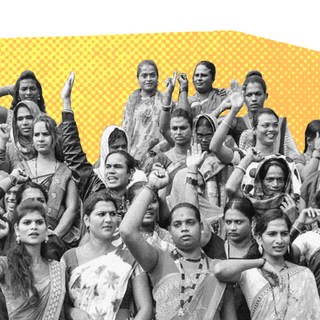
‘Domestic, Unmarried Partnerships or Queer Relationships’ Also Constitute a Family: Supreme Court
“These manifestations of love and families may not be typical but they are as real as their traditional counterparts,” the court observed.

What is a family unit, and how do you define it? In a significant observation, the Supreme Court noted that atypical family units — like domestic, unmarried partnerships and queer relationships — are also entitled to legal recognition and protection. Familial relationships are perceived as predominantly monogamous institutions understood to be complete with mothers, fathers, and children — but that’s not always the case.
“This assumption ignores both, the many circumstances which may lead to a change in one’s familial structure, and the fact that many families do not conform to this expectation, to begin with,” the apex court said, in an order uploaded on Sunday. “Family relationships may take the form of domestic, unmarried partnerships or queer relationships.”
The observation faintly echoes a fight to challenge the blinkered idea of marriage and family that we currently uphold: activists have rallied for the idea that relationships and marriages of people who are LGBTQIA+ need to be recognized bylaw, and even people in live-in relationships should have access to infrastructures like adoptions. “The black letter of the law must not be relied upon to disadvantage families which are different from traditional ones,” as the court noted.
The bench, constituting Justices D.Y. Chandrachud and A.S. Bopanna, was discussing a case that challenged who classifies as “caretakers” or “guardians” of a child. The present instance involved the case of a petitioner who was denied maternity leave for her biological child; her husband had children from a previous marriage, and the petitioner had alreadyavailed maternity leave before to take care of one of the children. Her maternity leave application was thus denied on the grounds that she availed child care leave for her husband’s biological children before.
That her maternity leave was called into question on the grounds that this wasn’t a “traditional” family raised questions about how access to maternity rights in India and the gendered division of labor in households, heavily depend onhow we view the institution of family in itself.
“A household may be a single-parent household for any number of reasons, including the death of a spouse, separation, or divorce. Similarly, the guardians and caretakers (who traditionally occupy the roles of the ‘mother’ and the ‘father’) of children may change with remarriage, adoption, or fostering,” the court said.
“These manifestations of love and families may not be typical but they are as real as their traditional counterparts,” and notably, they are “equally deserving not only of protection under the law but also of the benefits available under social welfare legislation.”
It is hard to put a number on how many people fall in these “atypical” set-ups. But anecdotally and through various surveys, we know there is a significant population of people in live-in relationships, widowed or single parents, or people in queer relationships who are left out of welfare schemes such as free ration or for laying claim to facilities that only a “husband” and “wife” have historically hadaccess to. Many struggle to navigate through a thickly-laid bureaucracy that doesn’t see them as a “family” in the first place.
While the apex court has previously cemented a progressive stance on how it frames families (including a recent judgmenton abortion that said even single, unmarried women should have access to abortion), the outlook hasn’t quite translated into tangible legal protection.
Related on The Swaddle
What Queerness Can Teach Us About Reimagining Relationships Beyond Rigid Conventions, Marriage
The context to the judgment includes a cultural and legal tussle. Multiple petitions are now pending before the Delhi High Court seeking to recognize same-sex marriages in India under the Special Marriage Act, Hindu Marriage Act, and Foreign Marriage Act. In different instances, the Union government has argued that “spouse” and “marriage” are for heterosexual couples only (husband and wife) and that “courts should refrain from legitimizing same-sex marriage.” The legal and political outlook both draw upon a cis-normative and heteronormative idea of personhood that continues to complicate people’s access to privacy and rights.
It may no longer be a crime to enter into consensual and private same-sex relationships ever since parts of Section 377 of the Indian Penal Code were struck down, but all is still not well. “…the absence of robust LGBTQIA+ inclusive policies at the union, state and district levels, and an overall lack of political will to create better laws for LGBTQIA+ people means that these issues will take a back seat,” The Leaflet noted.
Even with other non-traditional routes of partnership, different high courts have also previously observed the legitimacy of live-in relationships. “The only difference [between marriages and these] is that the relationship is not universally accepted. Individual also has the right to formalize the relationship with the partner through marriage or to adopt the non-formal approach of a live-in relationship,” Justice Sudhir Mittal of the Punjab and Haryana High Court said last year. At the same time, there have been other instances where judges have called live-in relationships “morally, socially not acceptable.”
Underneath it all is a cultural confusion around who constitutes a family unit.
Along with questions of how we define family and who this definition includes is also the matter of who does the defining. Giving legal recognition to institutes outside the confines of marriage is, then, key here. While the apex court’s observations are progressive and intend to break free from structures of oppression manufactured in the name of preserving tradition, the intent must eventually translate into tangible progress. One that can be measured through people’s lived experiences.
But the observation still remains an important articulation of where we stand as a society today. It recognizes the need to undo the deeply embedded link between “family” and “marriage” — an institution which as many feminist scholars have noted is in itself a system built on oppression and exclusion. “The kind of relationship that is most acknowledged and incentivized – socially, legally, and financially – is marriage…. historically speaking, the institution came into being for a very practical purpose: to ensure that a man’s children were in fact his true biological heirs, so they could safely inherit his property,” as Farah Maneckshaw noted in The Swaddle.
Then, as Maneckshaw argued, we need an ideological intervention where people prioritize and value the idea of “families of choice” — ecosystems of support that are founded on care, compassion, and consideration. Every ecosystem is built around a person, and it is that person’s agency that the law must recognize.
“Family to us is ‘all relationships that are actively and voluntarily maintained.’ Chosen families are characterized by enduring mutual care and support, and can include a wide variety of relationships, from friends, partners, ex-partners to animals. This way of living chips away at the dominance of the cis-heterosexual relationship and nuclear-family ideal, and could result in a greater collective emphasis on other forms of intimacy and love, such as friendships.”
Saumya Kalia is an Associate Editor at The Swaddle. Her journalism and writing explore issues of social justice, digital sub-cultures, media ecosystem, literature, and memory as they cut across socio-cultural periods. You can reach her at @Saumya_Kalia.
Related


Union Govt to Offer Health Insurance Scheme for Trans Persons
